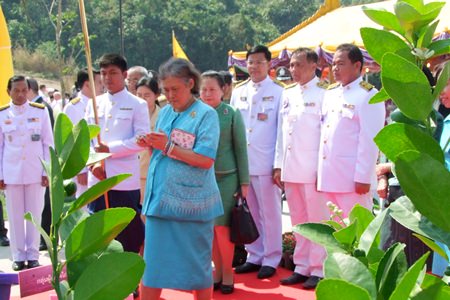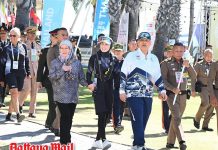After fifty years of talk and planning, Thailand’s largest raw-water reserve and dam went online in Koh Chan when HRH Princess Maha Chakri Sirindhorn opened the Khlong Luang Rachalothorn Reservoir project initiated by HM the King.
Suthep Noipiroj, director-general of the Royal Irrigation Department, said that Khlong Luang Rachalothorn Reservoir in the Phanat Nikhom District of northeast Chonburi is the largest raw water resource project initiated under the long vision of His Majesty.
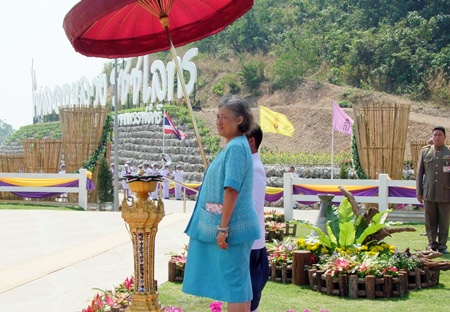 HRH Princess Maha Chakri Sirindhorn graciously opens the Khlong Luang Rachalothorn Reservoir project initiated by HM the King.
HRH Princess Maha Chakri Sirindhorn graciously opens the Khlong Luang Rachalothorn Reservoir project initiated by HM the King.
The Khlong Luang Rachalothorn project is located at the northernmost point of the Bang Pakong River and stores water for agriculture, consumption and prevention of flooding around the river. Furthermore, it supports industrial and commercial development in the eastern coastal area.
The Royal Irrigation Department first studied building the reservoir in the mid-60s. In 1972, the project was suspended due to additional engineering and needs studies. HM the King, speaking at Chitralada Royal Villa, again called for the lake’s construction, saying the irrigation department should either make the project smaller or buy more land to speed its development.
However, nothing further happened until 2009 when the cabinet approved construction, which began in May that year and completed in 2015 with a budget of 9.3 billion baht.
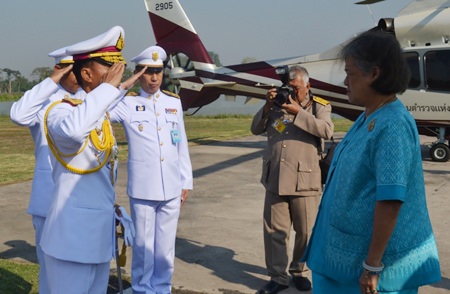
Suthep said the project includes a 3.8-kilometer-long dam that is 21.8 meters high and holds 98 million cu. meters of water. It can deliver water to 44,000 rai of agricultural land in the irrigated zone during rainy season with in 11 sub-districts in Phanat Nikhom.
“The Khlong Luang can help not only relieve flooding efficiently, but also generate stability of agriculture by increasing agricultural products, especially rice,” the irrigation chief said, adding a second rice crop can now be planted annually.
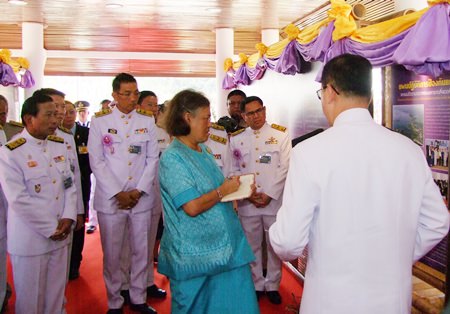
As part of the royal outline for the project, residents affected by reservoir development, nine “sufficiency economy villages” were established with occupations offered ranging from lime planting, mushroom cultivation, fishing and more.
Moreover, a commission was appointed for self-manage the villages, resulting in income increases for those impacted by the reservoir.
